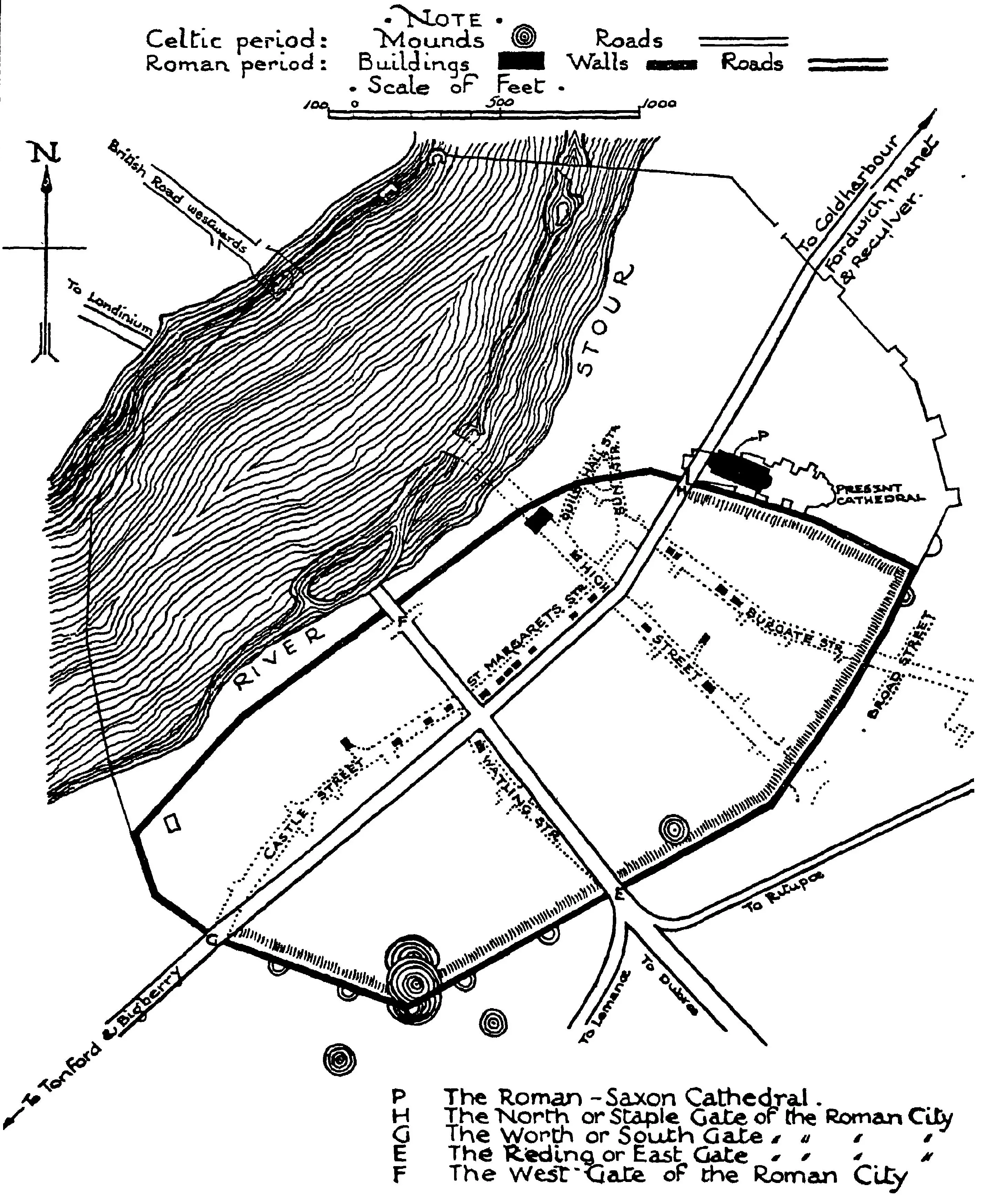Dane John Park in Canterbury, known initially as the Dungeon, has a history that dates back to ancient Roman times. This site’s story begins in the first century AD when the Romans established Durovernum Cantiacorum (modern-day Canterbury) as a vital settlement in their newly conquered province of Britannia. Recognizing the strategic importance of this location, the Romans constructed substantial fortifications to defend the town, laying the groundwork for what would become a historically significant site.
Around AD 43, the Romans founded Durovernum Cantiacorum, strategically positioning it at the crossroads of several major routes. This made the town a crucial hub for trade and military operations. The Romans built a series of defensive structures to protect this vital settlement, including walls, gates, and possibly a fort or earthworks. These fortifications were designed to safeguard the town from potential threats and to maintain Roman control over the region.
Archaeological evidence indicates that the Romans constructed significant defensive works in Canterbury, including a large mound and surrounding earthworks. These structures were typical of Roman military engineering, characterized by their robustness and strategic placement. The defensive mound, a vital site feature, likely served as a lookout point and a base for additional fortifications. This Roman fortification laid the foundation for the site’s enduring strategic importance. Remnants of Roman walls and other infrastructure elements have been uncovered in Canterbury, providing a glimpse into the sophisticated engineering practices of the Romans. The Decline of Roman Britain
As the Roman Empire began to decline in the early 5th century, so did its control over Britannia. Roman legions withdrew from the province, leaving behind their forts and infrastructure. Despite the departure of Roman forces, the defensive structures they built in Canterbury continued to influence the town’s development. The fortifications remained a prominent feature of the landscape, providing a base for future defensive efforts by subsequent occupants. The enduring presence of these structures is a testament to the lasting impact of Roman engineering.
Following the Roman withdrawal, the Anglo-Saxons took over the region and repurposed many existing Roman structures. While specific details about this period are sparse, it is clear that the Anglo-Saxons recognized the strategic value of the Roman fortifications and incorporated them into their defensive strategies. This period of transition saw the blending of Roman and Anglo-Saxon architectural styles and defensive techniques.
During the medieval period, the Normans recognized the strategic value of the existing Roman fortifications. The Normans, known for their military prowess and architectural innovations, incorporated the Roman earthworks into their defensive plans. They constructed substantial new fortifications on the site, including creating a large mound, which became a central feature of the fortified area. This mound, now called the Dungeon, was a critical component of Canterbury’s defenses during this period. The Normans’ ability to adapt and enhance the Roman structures ensured that the site remained a formidable defensive stronghold.
